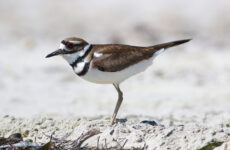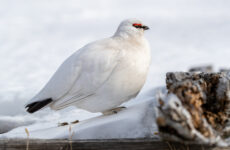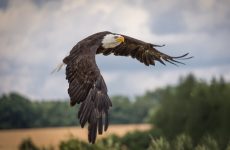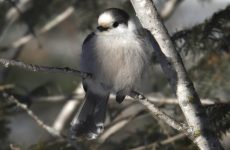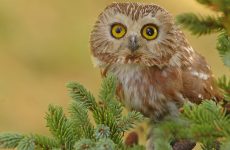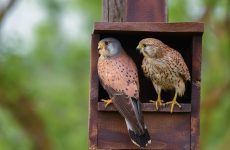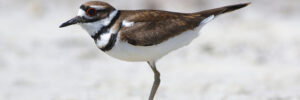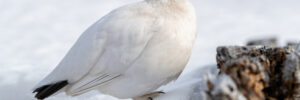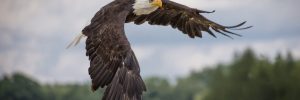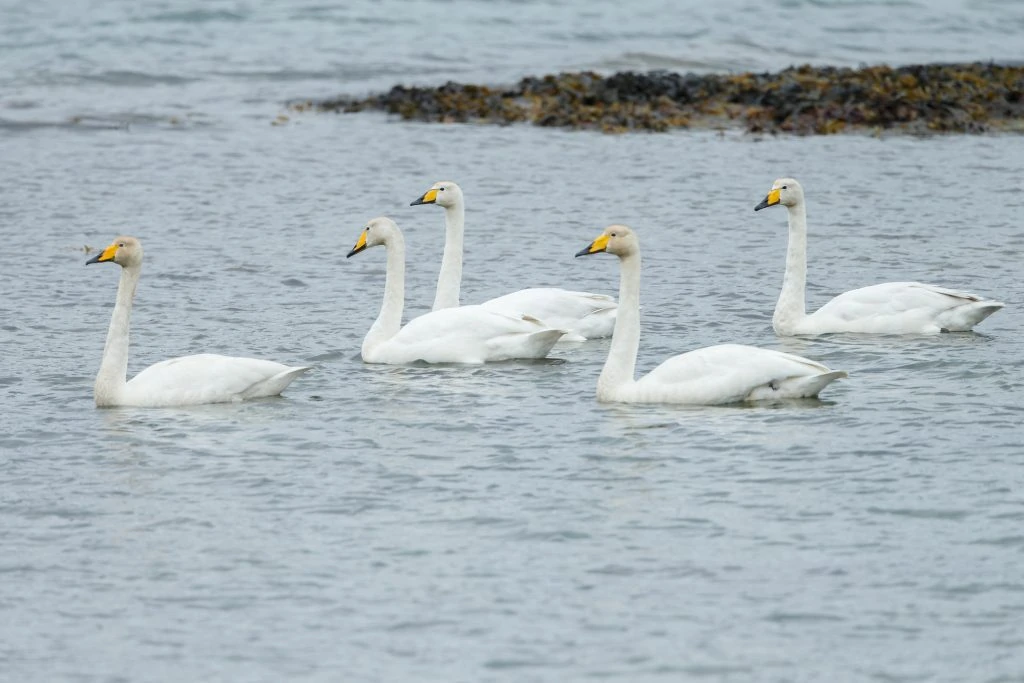
Three of the four species of swans found in North America have been spotted in Alaska. They are the Trumpeter Swan, Tundra Swan, and Whooper Swan.
This guide will help you identify the types of swans spotted in Alaska according to avibase and uses data collected from bird watchers on ebird to give real information about when these birds can be spotted.
Swans are large birds that are considered graceful and beautiful and are even depicted in children’s stories as such. They are usually white, but there are also black swans.
Male swans are called cobs and female swans are called pens.
Swans hold a special reverence and have done for centuries. They were once the preserve of royalty, and only the kings or queens could keep or hunt them and eat them. However, they are a protected wild species but now can be hunted with a special permit, but few ever do.
However, swans can be a nuisance, and the Mute Swan is an invasive species that is aggressive, especially at breeding times and is causing the destruction of habitats and forcing the native Trumpeter Swan to the brink of extinction.
If you enjoy spotting waterbirds in Alaska, then you should also find out more about Ducks in Alaska.
3 Species Of Swans In Alaska
1. Trumpeter Swan
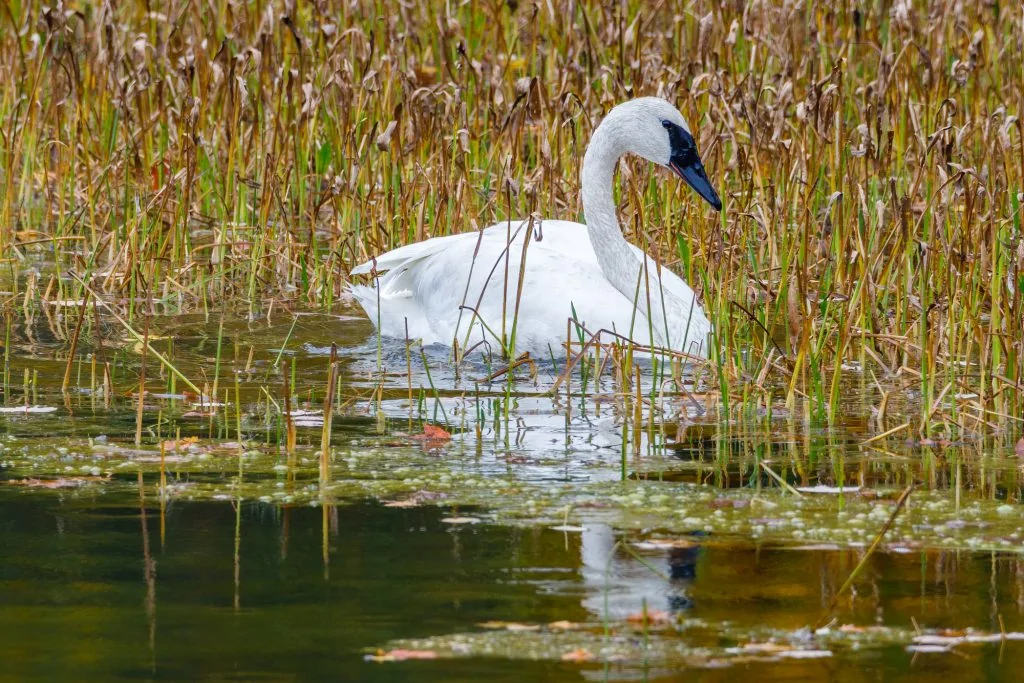
Trumpeter Swans are spotted in Alaska all year, but their numbers increase during migration from April to May and October to November.
They are recorded in 4% of summer and winter checklists submitted by bird watchers for the state and up to 12% of checklists during migration.
The Trumpeter Swan has the distinction of being the longest and heaviest living bird native to North America. It is also recognized as the heaviest flying bird in the world.
- Cygnus buccinator
- Length: 58 – 72 in (147 – 183 cm)
- Weight: 401.6 oz (11381 g)
- Wingspan: 72 – 102 in (183 – 259 cm)
Trumpeter Swans are entirely white except for their black bills, legs, and feet. There is a black patch on their face, seemingly connecting their eyes to their bills. Their heads and neck may occasionally show some rust-brown coloring because of their contact with iron elements in wetland soils.
Juvenile Trumpeter Swans are mostly dusky-gray, with a pink center on their black bills.
Trumpeter Swans breed in northwestern Canada and Alaska and migrate to the Pacific Northwest. Those that breed around the Great Lakes migrate to central inland US states.
You can find Trumpeter Swans in marshes, lakes, and rivers with dense vegetation. They breed in open areas near shallow waters. They are sometimes seen on agricultural fields, too.
In water, Trumpeter Swans usually eat aquatic plants and vegetation, which they can reach with their bills underwater. With their long necks, they are able to reach plants in deeper water, even going as far as tipping, like a dabbling duck, to get at their food.
With their large and powerful bills, they can uproot aquatic plants and feed on them. When they visit agricultural fields, they also eat spilled or leftover grains and crops.
Trumpeter Swans Call:
Nests of Trumpeter Swans are almost always surrounded by water or close to it. It is the male that builds the nest by throwing grasses, grass-like plants, and other submerged vegetation over his shoulder, slowly building mounds of this material until he reaches the nesting site.
They also nest in beaver or muskrat lodges. The female will then lay four to six eggs that she will incubate for about four weeks until they hatch.
Fun Fact: Trumpeter Swans generally mate for life. When nesting, there is always one adult that stays with the nest. They are both territorial and aggressive when it comes to protecting their nesting area.
2. Tundra Swan
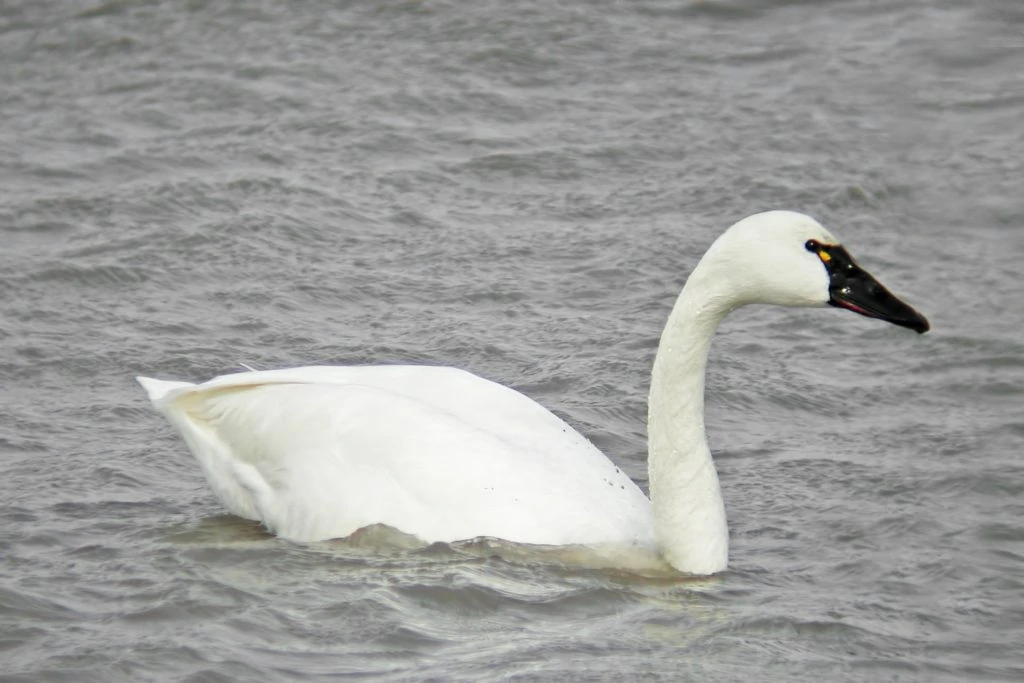
Tundra Swans are mainly spotted in Alaska from April to November, but some are occasionally spotted all year. They appear in 6% of summer checklists.
Tundra Swans refer to two subspecies of swans: Whistling Tundra Swan (Cygnus columbianus) of North America and Bewick’s Tundra Swan (Cygnus columbianus bewickii) of Eurasia.
- Cygnus columbianus
- Length: 487 – 58 in (119 – 147 cm)
- Weight: 370.37 oz (10496 g)
- Wingspan: 72 – 84 in (183 – 213 cm)
Tundra Swans are identifiable because of the yellow patches at the base of their bills. Bewick’s Tundra Swans have a more pronounced yellow patch than the Whistling Tundra Swan. Sometimes, there is no yellow patch on the Whistling Tundra Swan. But, they both have entirely white bodies with long necks and black legs and feet.
Juvenile Whistling Tundra Swans are pale brown with white highlights and a mostly pink bill with black tip and base.
Tundra Swans breed in the Canadian Arctic and coastal Alaska. They migrate to the Pacific Northwest and sites inland. They also migrate for winter to the Great Lakes and the coastal mid-Atlantic.
You can find Tundra Swans, as their name suggests, on Arctic tundra. They mostly form flocks in wetlands, marshy lakes, ponds, estuaries, and bays. They also flock together in agricultural fields.
Tundra Swans mostly eat aquatic vegetation, which they forage for by sticking their head underwater. They also use their large webbed feet to dig around the bottom. They also eat grass and grass-like vegetation when on land. Crops, like potatoes and corn, are their diet when they’re on agricultural fields, especially after harvest time.
Tundra Swans Call:
Nests of Tundra Swans are usually built as mound-shaped nests near open water. They are built from plant materials available in the area. The female lays four to five eggs which she incubates for up to forty days until they hatch.
Fun Fact: The Tundra Swan used to be called “Whistling Swan” because of the sound their wings make in flight.
3. Whooper Swan

Whooper Swans are considered rare or accidental species in Alaska, but there have been recent sightings in the state.
The Whooper Swan (pronounced hooper swan) is also known as the Common Swan. Their bodies are entirely white. They have a bright yellow bill covering almost half of the bill and black at the tip.
- Cygnus cygnus
- Length: 60 in ( 152 cm)
- Weight: 329.6 oz (9341 g)
- Wingspan: 84 – 96 in (213 – 244 cm)
Whooper Swans are native to Eurasia and breed in cold northern regions and winter further south in wetlands. However, there are vagrants in the United States and Canada.
You can find Whooper Swans living together in flocks near wetlands, on flooded fields, lakes, and small ponds. When they graze on land, you will find them on farmlands close to the coast.
Whooper Swans forage mostly underwater. They submerge their heads and long necks in search of underwater plants. They use their large bills to pull out plants by their roots, eating all of them, including the stems.
Whooper Swans Call:
Nests of Whooper Swans are often located on islands and on lakeshores. They are built like large mounds out of plants, moss, reeds, grass, and lichens. The female lays four to six eggs and incubates them for thirty-five days. The male defends the nest during this time.
Cygnets, or young swans, are able to fly when they are four or five months old.
Fun Fact: Whooper Swans need to be near large areas of water when they’re growing up because their legs and feet are not able to support their large bodies for long periods of time.

